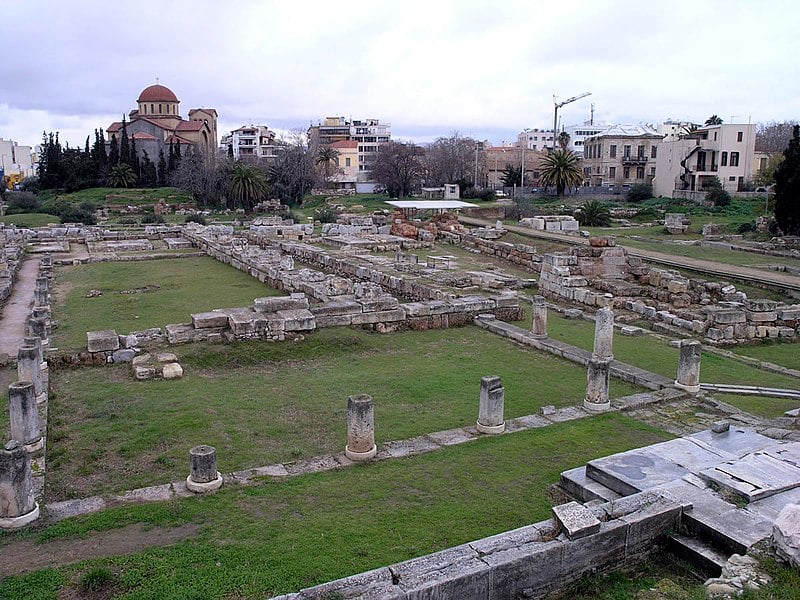Kerameikos is an ancient Athenian area formerly known as the Potters’ Quarter, which today stands as the largest necropolis in Greece.
According to the historian Herodotus, Kerameikos is named after the Greek word “Keramos,” which means fired earth. Kerameikos is the root of the term “ceramics”—the art of firing clay. The potters settled in this place because of the clay deposits produced by the Eridanos, a stream in classical Athens that crossed the site from time immemorial until 2011 when the river overflowed into the adjacent area.
During the Greco-Persian Wars of 487 BC, Themistocles decided to build a wall to protect the agora, or marketplace, of the city. The wall divided Kerameikos into inner and outer sections. It was then that the outer area began to be used as a cemetery for soldiers who died in battle.
Work began for the construction of a road that would go from the center of Athens to Piraeus in 1862. During construction, three funerary stones full of inscriptions appeared. The Greek government, aware of the historical and archaeological importance of these inscriptions, bought the land and began excavations years after their initial discovery.
A large piece of sculpted marble appeared one week after the excavations began. The marble had the names of two sisters and their father inscribed on it. The archaeologists determined that this was only a fragment of a family tomb and continued excavating until they discovered the remains of a woman.
By 1872, the excavations had already brought to light many other finds, and the following year, the Dipilon and the Sacred Gate were also discovered. This meant that Kerameikos, the potters’ quarter, would from then onward be known as the city of the dead of Kerameikos and the necropolis of Dipilon.
Even after years of exploring the site, the size of the necropolis cannot be determined by archaeologists.
A German professor, Alfred Brueckner, was the first to realize that excavations would take many years to get a clear view of the magnitude of Kerameikos, so he requested permission to make small exploratory excavations to delimit the area. In 1909, his book The Cemetery of Eridanos was published. The book illustrates small maps of the necropolis.
Those who lived around the Acropolis of Athens buried their dead in Kerameikos, and the plains of the Eridanus River served as a burial place for the city for roughly 1,500 years.
A large amount of pottery with geometric patterning has been discovered at Kerameikos. These artifacts offer insight into an entire period of Ancient Greek history.
The first of these artifacts to be discovered was a group of bowls in 1871. These bowls, which were used to collect ritual offerings, were decorated with complex geometric motifs. From the eighth century BC onward, they included figures of animals and humans in their design. The bowls measured one and a half meters in diameter.
In 1913, the government of Greece entrusted the Archaeological Institute of Athens with the excavations of Kerameikos, which began in 1914 and stopped in 1916 due to the First World War. The excavation resumed in 1926 with the support of Gustaf Oberländer, an American from Germany.
The Oberländer Museum was opened in 1937. The museum had a small exhibition space but a large number of visitors. The exhibition displayed tombstones, vessels, and original funerary objects in chronological order.
Luisa Rosenstiehl
Εστάλη στην ΟΔΥΣΣΕΙΑ, 1/6/2024 #ODUSSEIA #ODYSSEIA, Greek Reporter

